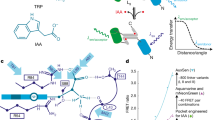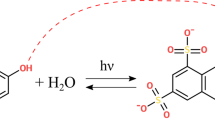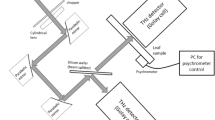Abstract
INDOLYL-3-ACETIC acid (IAA) can be determined either by non-specific biological methods1 or by chemical methods2. Most of the quantitative work with auxins has been based on bioassays. This is probably due to their high sensitivity, and because larger amounts (300 g) of plant tissue are necessary to maintain precision when using chemical methods8. This communication describes a Spectrophotometric technique which offers a means of precise, sensitive, quantitative estimation of IAA from small amounts of plant material.
This is a preview of subscription content, access via your institution
Access options
Subscribe to this journal
Receive 51 print issues and online access
$199.00 per year
only $3.90 per issue
Buy this article
- Purchase on Springer Link
- Instant access to full article PDF
Prices may be subject to local taxes which are calculated during checkout
Similar content being viewed by others
References
Larsen, P., Encyclopedia of Plant Physiology, edit. by Ruhland, W., 14, 521 (Springer-Verlag, 1961).
Bentley, J. A., Encyclopedia of Plant Physiology, edit. by Ruhland, W., 14, 501 (Springer-Verlag, 1961).
Vlitos, A. J., and Meudt, W., Contrib. Boyce Thompson Inst., 17, 401 (1954).
Harley-Mason, J., and Archer, A. A. P. G., Biochem. J., 69, 60 (1958).
Author information
Authors and Affiliations
Rights and permissions
About this article
Cite this article
FLETCHER, R., ZALIK, S. Quantitative Spectrophotometric Determination of Indolyl-3-acetic Acid. Nature 199, 903–904 (1963). https://doi.org/10.1038/199903b0
Issue Date:
DOI: https://doi.org/10.1038/199903b0
Comments
By submitting a comment you agree to abide by our Terms and Community Guidelines. If you find something abusive or that does not comply with our terms or guidelines please flag it as inappropriate.



